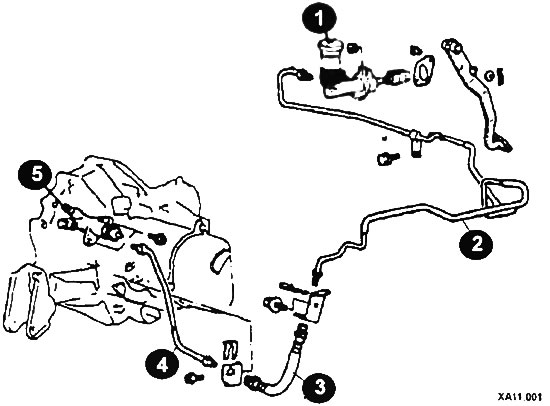
Elements of hydraulic clutch drive
1 - clutch master cylinder; 2, 4 - hydraulic tube; 3 - hose; 5 - clutch slave cylinder.
The transmission of power between the engine and gearbox is carried out by means of a clutch, which works using frictional force. Two adjacent surfaces grip a third and hold it so tightly that it spins with those surfaces. The meaning of this is that this connection can be opened at any time. The flywheel and the pressure plate with a spring are firmly connected to the engine. Between them is clamped the driven clutch disc, which is connected by a spline connection to the gearbox shaft.
Another important function is performed by the clutch release bearing: when the clutch pedal is depressed, it presses under the action of the clutch drive mechanism on the pressure plate and overcomes the force of the pressure plate spring. At the same time, the driven disk is released from its forced clamped position and can freely rotate between the pressure disk and the flywheel. The engine and gearbox are separated.
The clutch drive is hydraulic. Single disc clutch, dry, with diaphragm spring.
The clutch disc moves freely along the input shaft of the splined gearbox and takes the desired position between the flywheel and the pressure plate when the pressure plate spring is pressed. The friction linings are riveted to the clutch disc and have a spring pad to absorb transmission vibration and improve power take-off.
